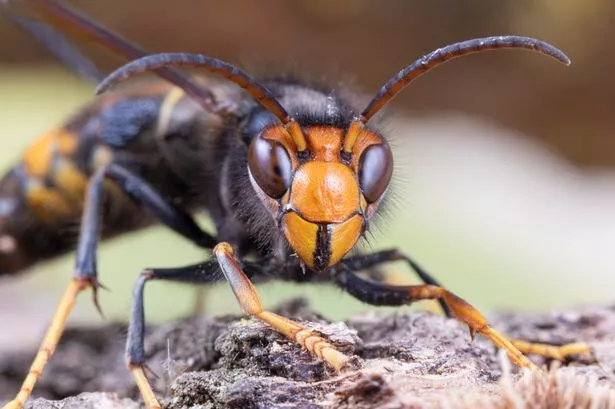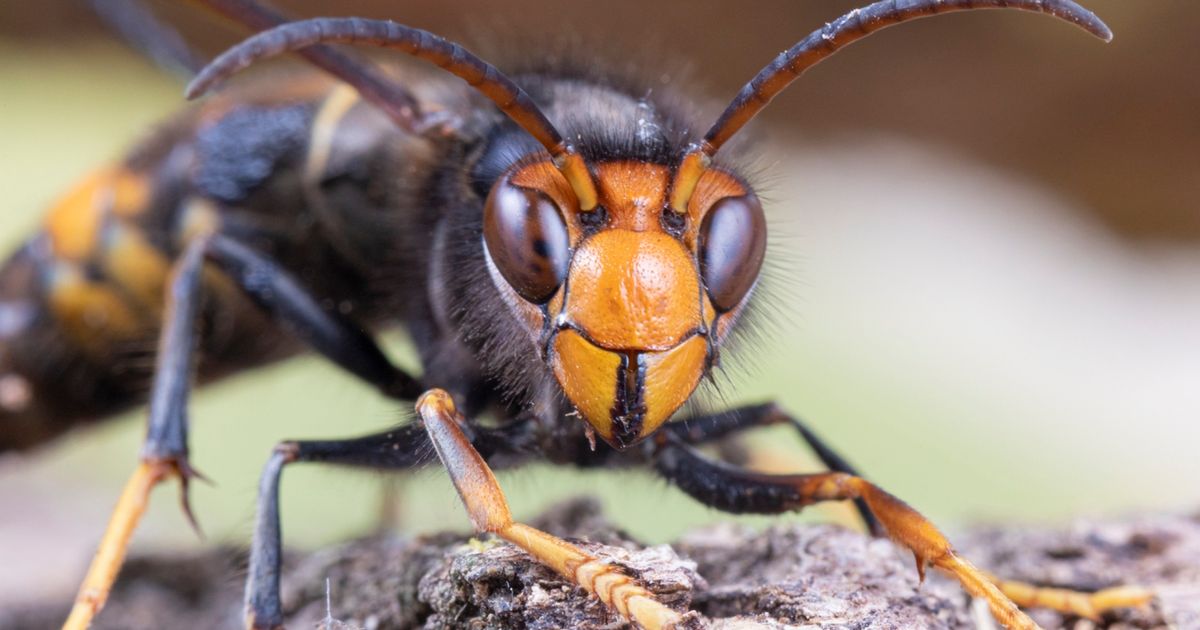Asian hornets are known for their more aggressive nature and their ability to sting multiple times Asian hornet (Vespa velutina), also known as the yellow-legged hornet or Asian predatory wasp
Asian hornet (Vespa velutina), also known as the yellow-legged hornet or Asian predatory wasp
The UK is experiencing one of its hottest summers on record, with sustained heatwaves throughout June and July creating an ideal environment for wasps. And it’s not just the common yellowjacket people have to worry about.
The invasive Asian hornet can pose a serious threat to native wildlife. In 2025 so far, there there have been 37 confirmed sightings of Asian hornets, also called yellow-legged hornets, in the UK.
The National Bee Unit has also reported 73 sightings and 28 nests – more than double the 28 recorded sightings in the same period last year. Rachel Garbutt, vet nurse at Butternut Box said: “Asian hornets, or Vespa velutina, are easily identifiable by their dark, velvety brown or black bodies, distinct bright orange legs, and a prominent yellow-orange band near the tail.
“Unlike native wasps, they are known for their more aggressive nature and their ability to sting multiple times. Their venom can cause significant pain and, in some cases, severe allergic reactions.
“Curious pets, particularly dogs, may accidentally disturb nests while on walks in parks, woodlands, or even in their gardens, leading to painful stings.
“Alongside the emerging threat of Asian hornets, wasp activity typically peaks during the summer months, particularly in late summer as their food sources change.
“Wasps can sting repeatedly and are more likely to become aggressive when their nests are disturbed or they feel threatened. Dogs enjoying walks, garden playtime, or sniffing around picnic spots are prime candidates for accidental stings.”
If you spot Asian hornets or suspect a nest near your property or along your usual walking routes, keep pets away and report your sighting online to the UK Centre for Ecology and Hydrology.
Full details of how to identify Asian hornets can be found on the Asian Hornet Alert page at The GB Non-native Species Secretariat (NNSS), along with alert posters and ID sheets. You can also report suspected sightings via the Asian Hornet Watch app.
Do not attempt to remove or disturb nests yourself, as this can provoke a highly aggressive swarm response.
5 things to do if your dog gets stung
- Take a close but gentle look at your dog’s skin for any swelling, redness, or a visible sting. Unlike bees, wasps don’t leave their stinger behind, so you won’t have to worry about removing one.
- Make sure your dog has plenty of fresh, cool water and a quiet, shady spot to relax. Try to keep them from licking or scratching the sting, since that can make things worse or cause an infection.
- Watch for signs like vomiting, swelling around the face or neck, trouble breathing, weakness, excessive drooling, or collapse. If any of these happen, it could be a serious allergic reaction, and you’ll need to get them to a vet right away.
- Applying something cold, like a cold pack or a damp cloth, to the sting can help ease pain and reduce swelling.
- To avoid more wasp stings, try to stay away from known nests, cover outdoor food and drinks, and consider planting natural repellents like mint, eucalyptus, or thyme in your yard.
Generally, if your dog has been stung, it’s best to offer water but hold off on feeding them right away, especially if they seem uncomfortable, swollen, or are showing any signs of distress. Feeding could sometimes upset their stomach further or interfere if they need medication later.
Your Dog Ate a Wasp — Now What?
Sometimes, curious dogs may catch and eat a wasp or hornet whole. If this happens and your dog seems fine, showing no immediate signs of distress, swelling, vomiting, or discomfort, there’s usually no need to panic. Most healthy dogs will pass the insect without serious issues, but it’s important to keep a close eye on them for the next few hours.
